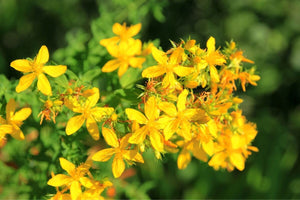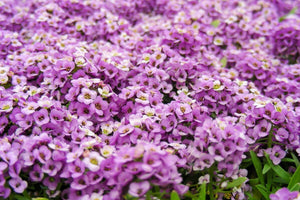How to Easily Start Home Composting for Rich Organic Garden Soil
CompostIf you've been gardening for any length of time, you've heard about composting. Creating your own compost pile is a natural and highly effective way to improve garden soil. We'll look at the easy steps you can start now to make compost at home for free.

What is Home Composting?
Composting is the simple process of turning organic matter like kitchen scraps, grass clippings, leaves, and other items into a rich, nutrient-dense soil amendment for your garden and landscaping needs. All you need to do is set up the right environment to allow the natural decomposition process to happen.

How to Start Home Composting
Composting provides you with nutrient-dense food for your garden - for free. Don’t be intimidated by the idea because anyone, even absolute beginners, can compost without a lot of effort or expense. These steps will get you started.
1 - Choose a Place for a Compost Pile
The simplest method of composting is a good old-fashioned compost pile or bin system outdoors.
If you don't have a yard, there are indoor micro-composting systems that use either small self-contained composting systems or worms (vermicomposting).
The easiest way to start composting is to designate a spot for a compost pile. However, most backyard gardeners don't have a lot of space, so using a bin is a great way to keep the compost pile contained. To keep this home composting project free, use a plastic gardening bucket or tub that you already have. Add holes to the bottom to allow for water drainage. You can also use wood or garden stakes around the perimeter with chicken wire. A 3-foot by 3-foot bin is the recommended size to allow for the fastest decomposition.
If you have the supplies, you can build an easy, simple compost bin.
An ideal spot to start a compost pile would be a shady place that is accessible for adding water and stirring periodically.

2 - What to Add to a Compost Pile
Did you peel a carrot? Add peels to your compost pile. Coffee grounds? Throw them in. You can keep a bowl or a bucket with a lid next to your sink or garbage can to collect your kitchen scraps.
To start a compost pile, you need a mix of green and brown materials. The general ratio is to add 4 parts of brown material to 1 part green material. For more information, you can read this blog about carbon/nitrogen ratios.
Green materials are fresh plant materials like vegetable scraps, fresh grass clippings, weeds, and garden trimmings. Animal manure is also considered a green material, and there are pros and cons of using it. But never add cat and dog waste.
Brown materials consist of dry and woody plant material. Think leaves, straw, hay, shredded paper or cardboard, and sawdust.
Things NOT to Compost:
Do not compost cat or dog waste, weeds that have gone to seed, black walnut leaves, meat, dairy, or other animal products. These items pose safety issues or will harm the quality of your compost.
Continue adding layers of greens and browns to your pile or bins whenever you have them. Try to always end with a layer of brown items, which will help to keep smells down and deter pests.
3 - Add Water as Needed
Watering a compost pile is part of the process to help turn food scraps and leaves into rich soil. A healthy compost pile should be a little bit moist so that the microorganisms can thrive. If it is too wet, there won't be enough oxygen for the bacteria to thrive.
4 - Stir Your Compost Pile
After you've added layers of greens and browns to your pile or bin, you don’t have to do much work for nature to run its course.
However, to keep the bacteria thriving, you need to stir your compost every once in a while to add oxygen to the mix.
You can turn the compost occasionally with a pitchfork to aerate the content. Add more compostable items as you get them, always alternating greens with browns and adding moisture as needed.
Composting is easy to get started, accessible, and good for both the environment and your garden!

Beyond the Pile - Additional Ways to Compost
Composting In A Tumbler
Tumbler composting uses a rotating drum or another container. This container is designed to make it easy for you to mix the materials and add air to speed up the process. Add a mix of green and brown materials to your tumbler as available, and rotate every few days to distribute heat and add airflow. This will help the bacteria inside to break down the organic material efficiently.
Vermicompost
If you’re composting indoors, you might be interested in using worms to compost your materials. This process, called vermicomposting, is much faster than traditional composting, doesn’t produce bad odors, and can be done in small spaces. Worms are fed kitchen scraps and other compostable materials in a self-sustaining system. You just provide the worms with plenty of food and moisture and use the worm castings as your soil amendment.
Benefits of Home Composting
Home composting has many benefits that you'll appreciate as a gardener.
- Repurpose materials you already have.
- Less waste goes to landfills.
- Create fertile soil for free.
- Amend your soil and add nutrients.
- Maintain a sustainable lifestyle.

Home Composting FAQs
When is compost ready to use?
When compost is ready to use in the garden, it will look and feel like fertile soil.
Does compost need to reach a certain temperature?
Compost can be "hot" or "cool". Microbes will be active between 40 and 140ºF. Hot composting produces usable compost in a shorter amount of time but can involve more work. For additonal information, you can read this article from the University of Maryland Extension.
Home composting is super easy, even for beginners. The basic ingredients are compostable materials and a space for Mother Nature to do her magic. There are some basic guidelines to follow, but we’re confident that you can handle it.
Our Planter's Library has detailed information about composting. You can read more about using compost and how it can improve both sandy and clay soil.
You can start home composting today with your kitchen scraps and garden waste. The sooner you start, the sooner you'll have that magic ingredient that really makes your garden thrive.
Written by Teresa Chandler






Leave a comment